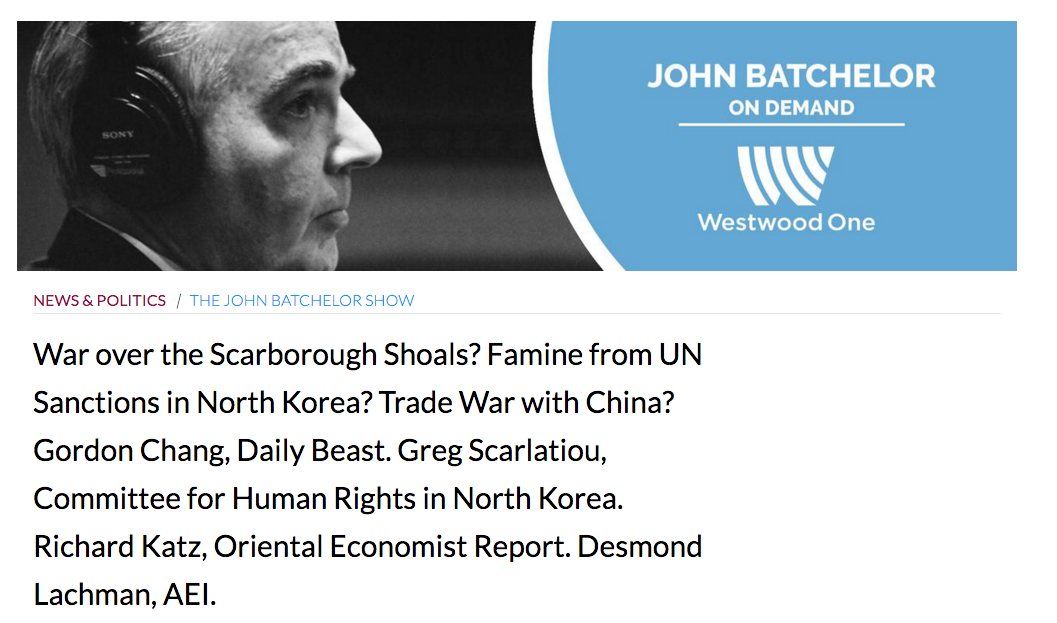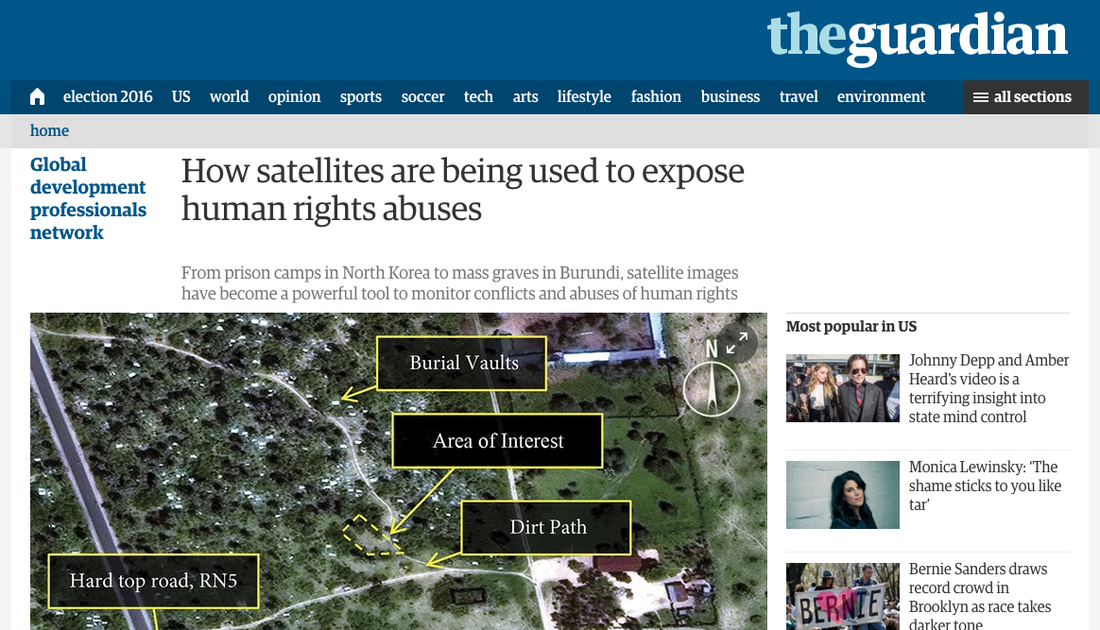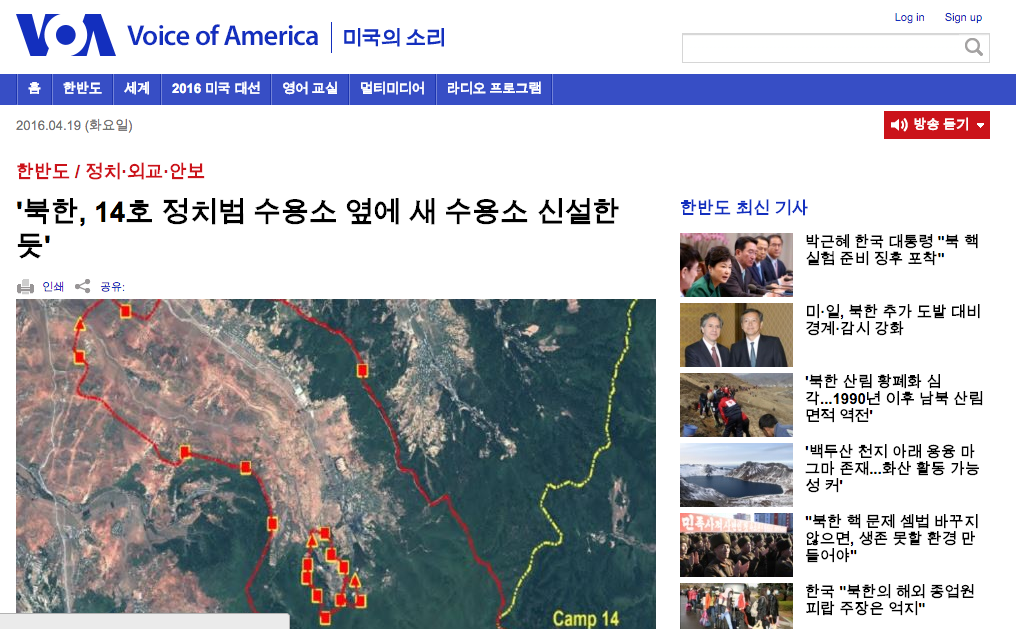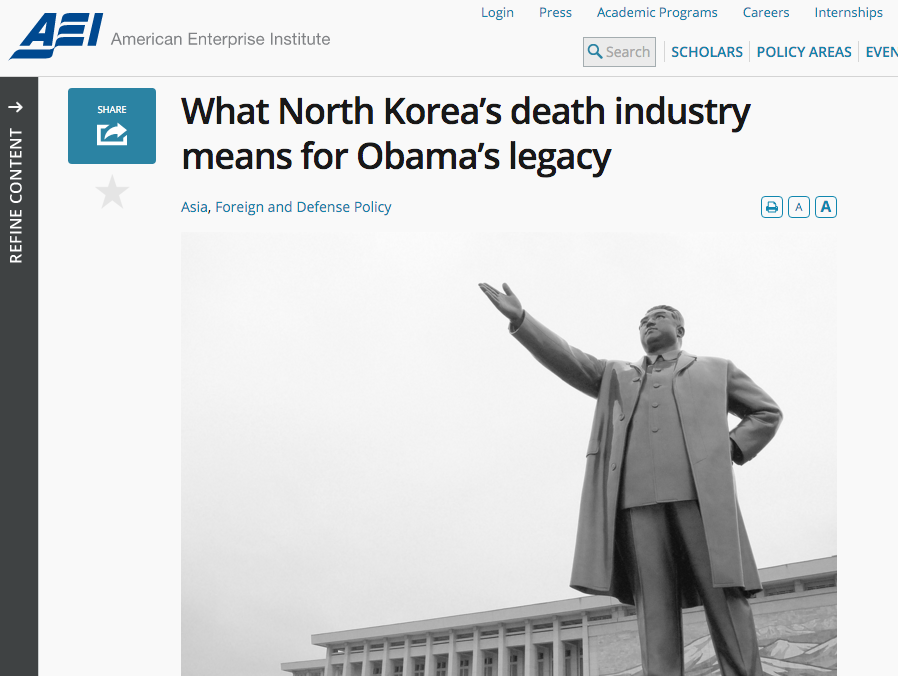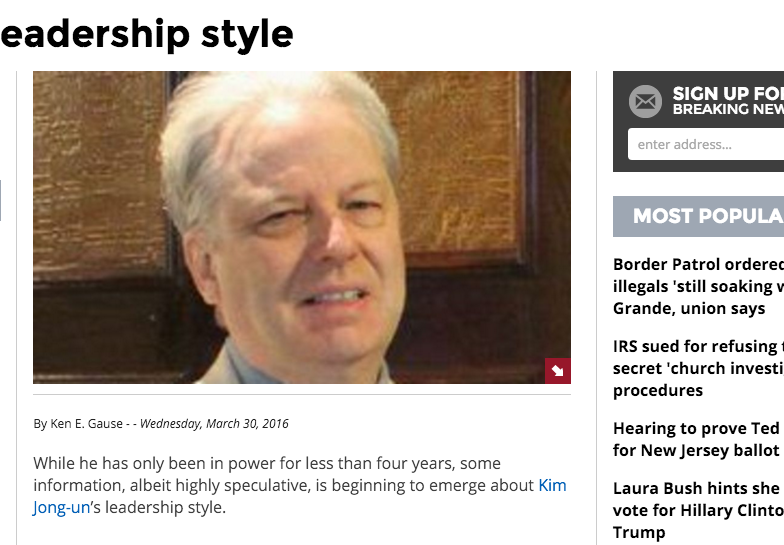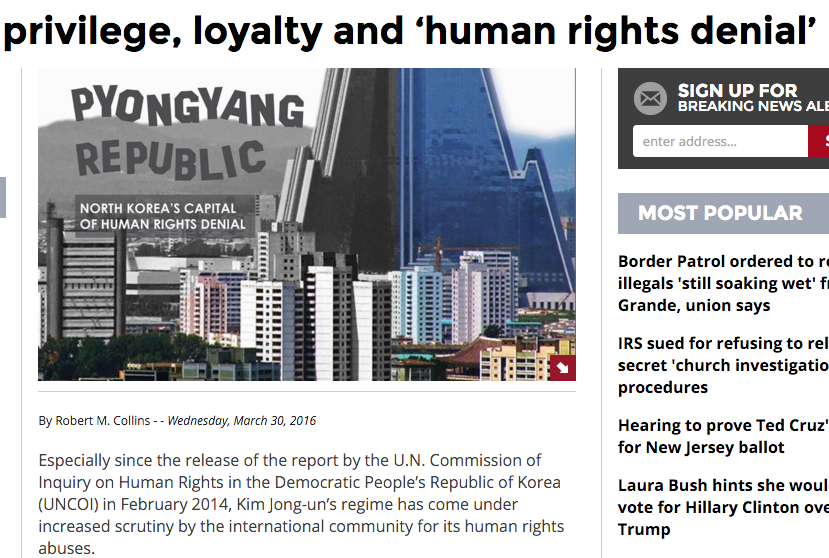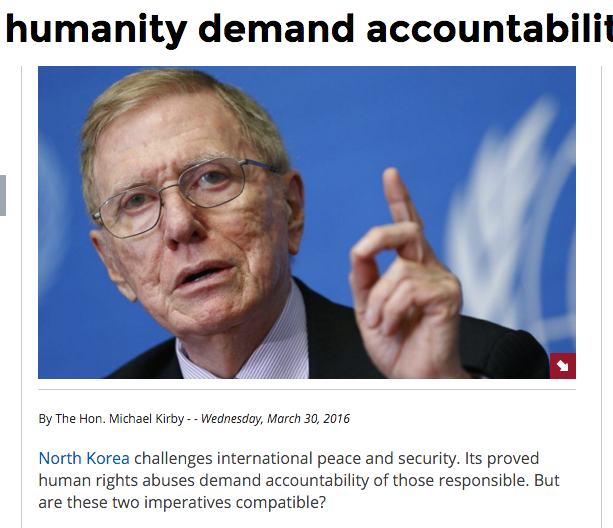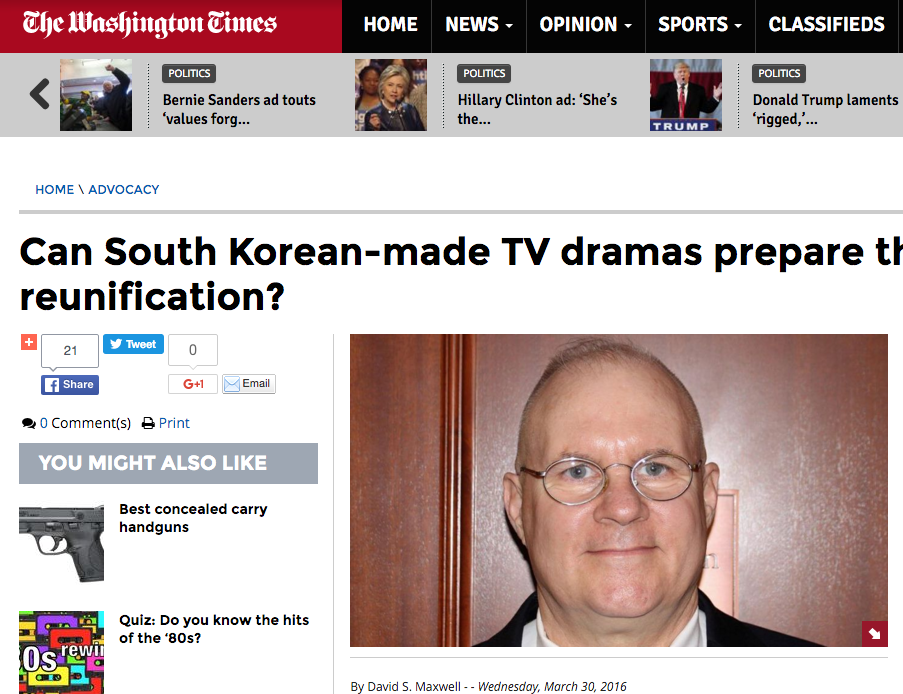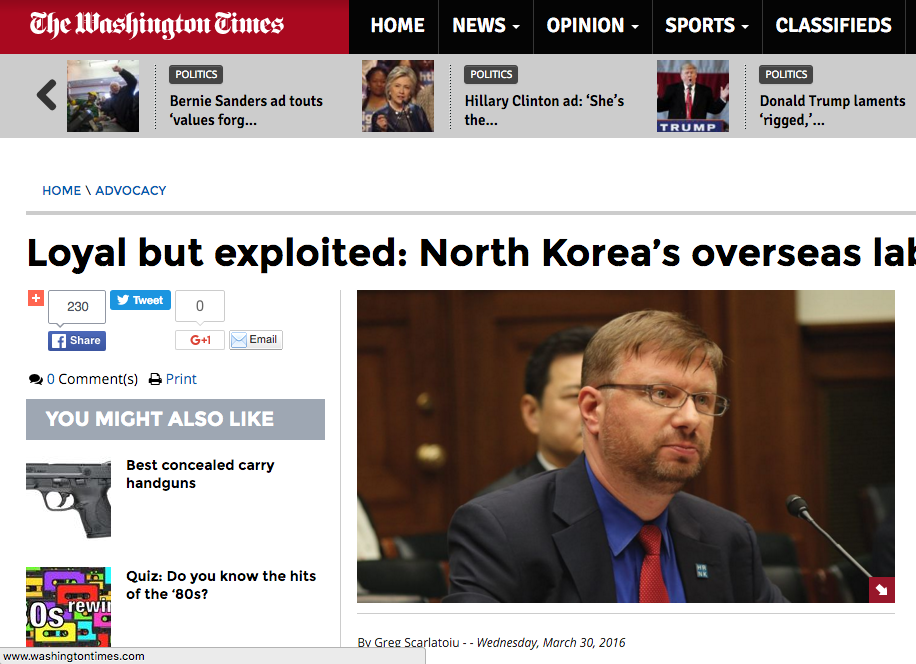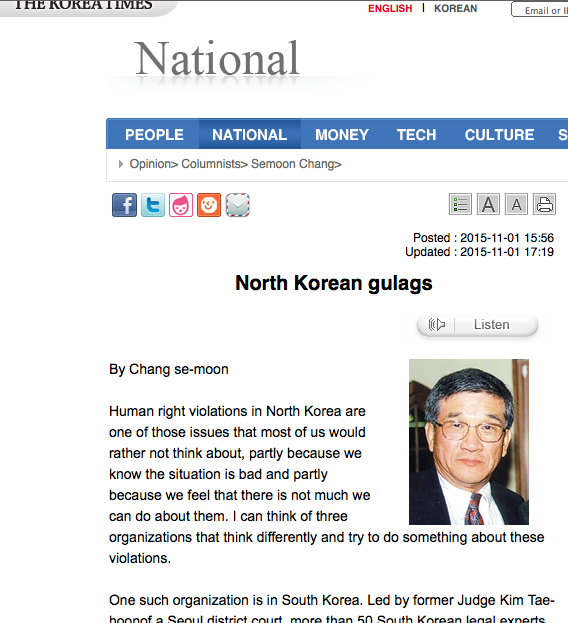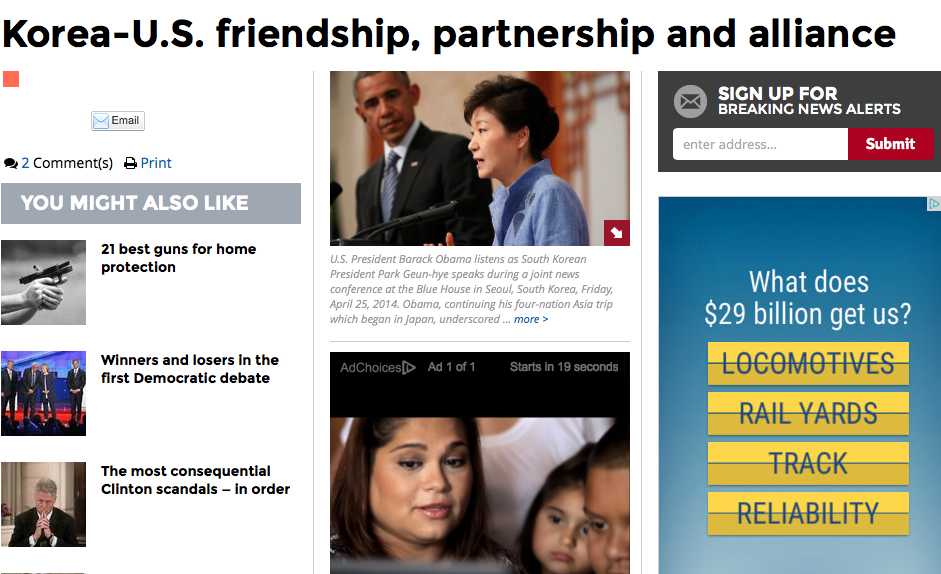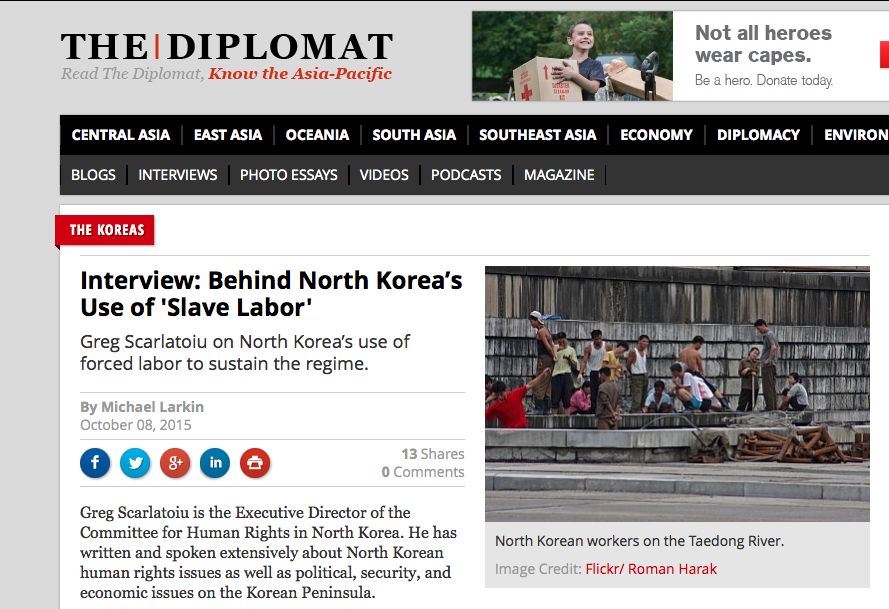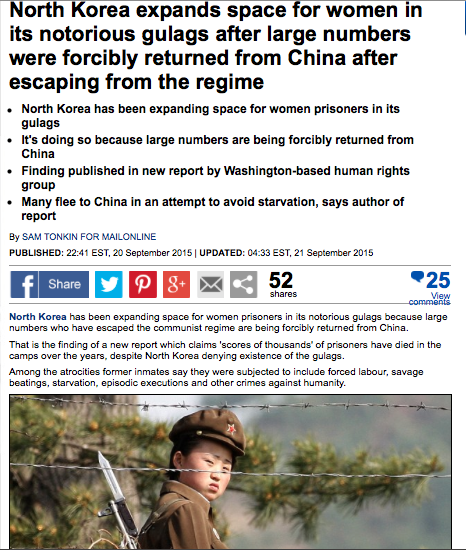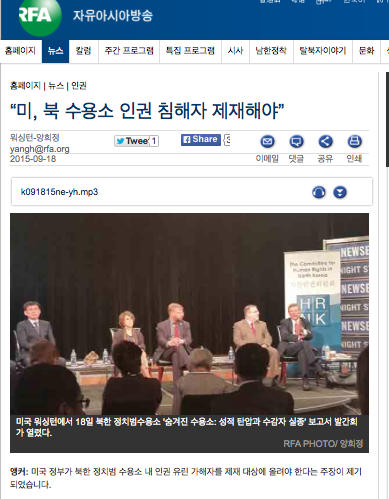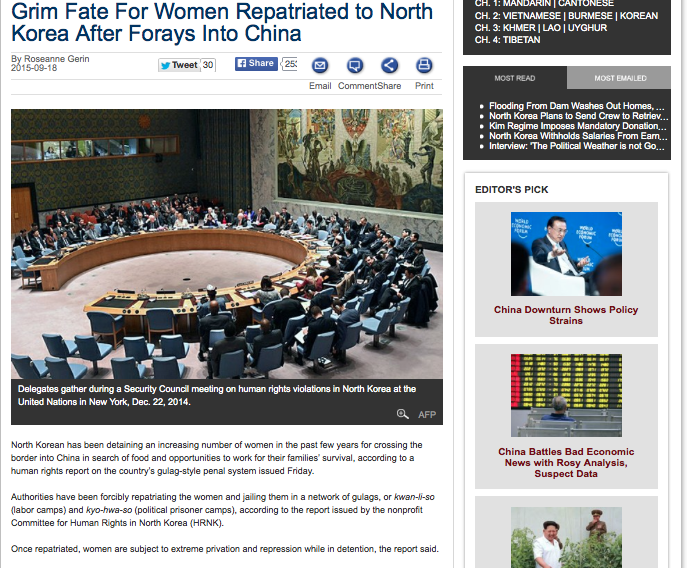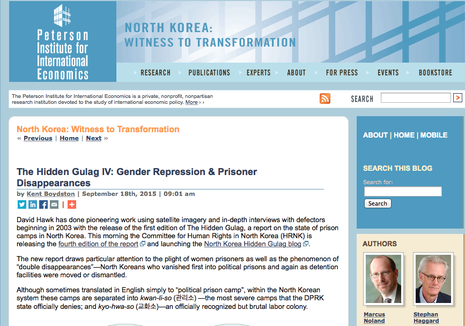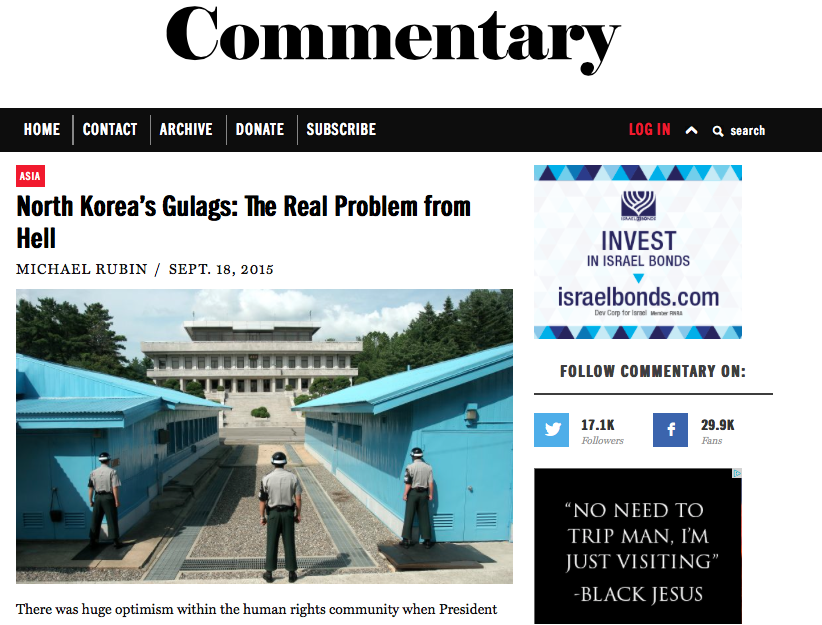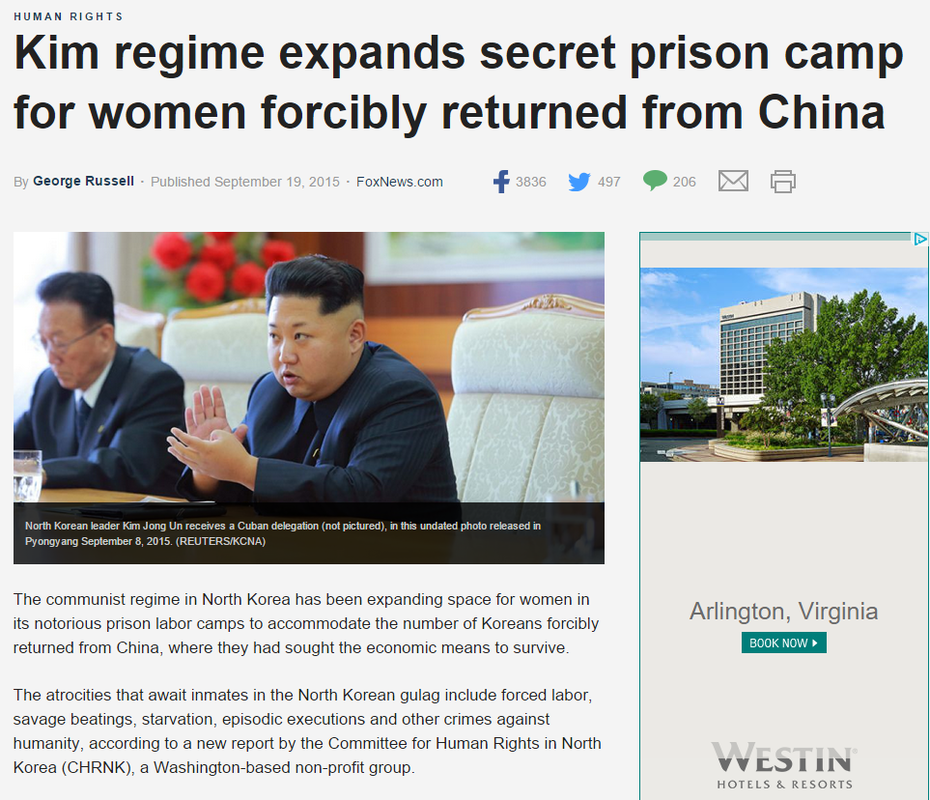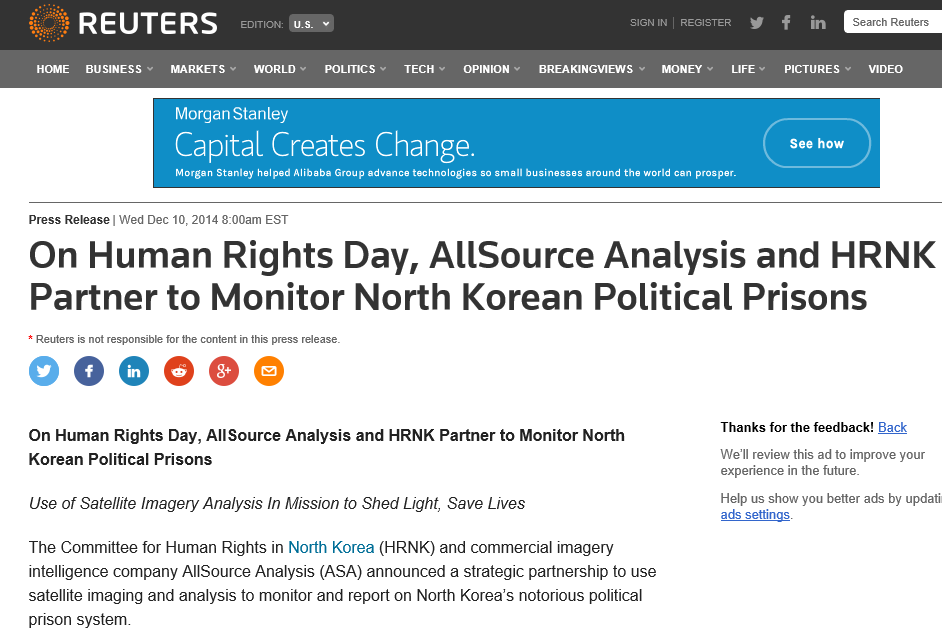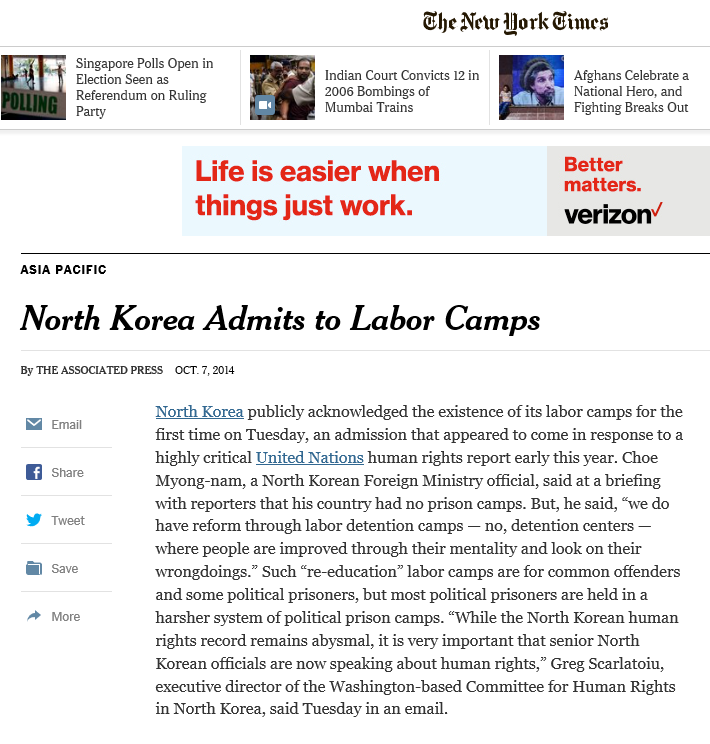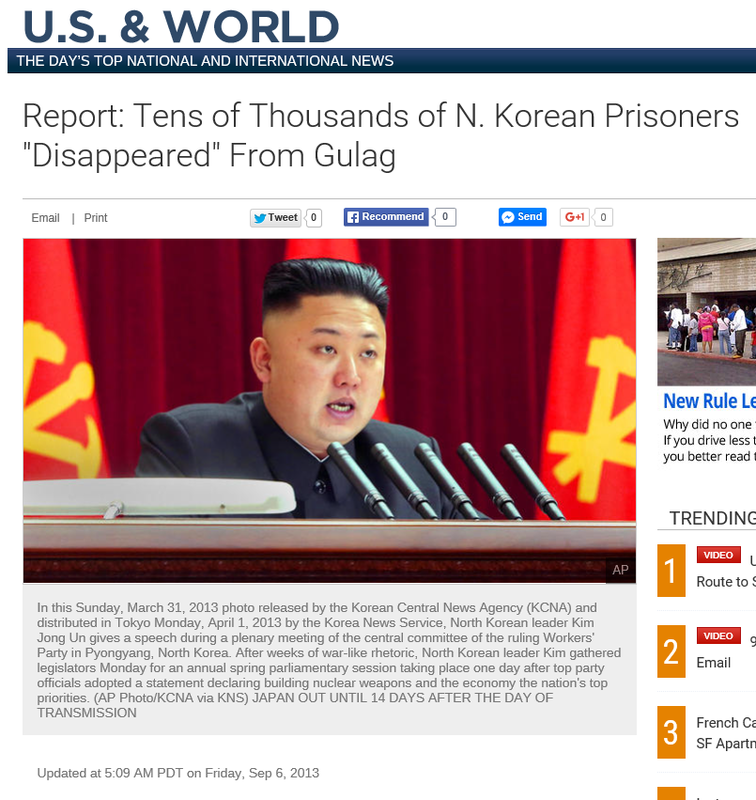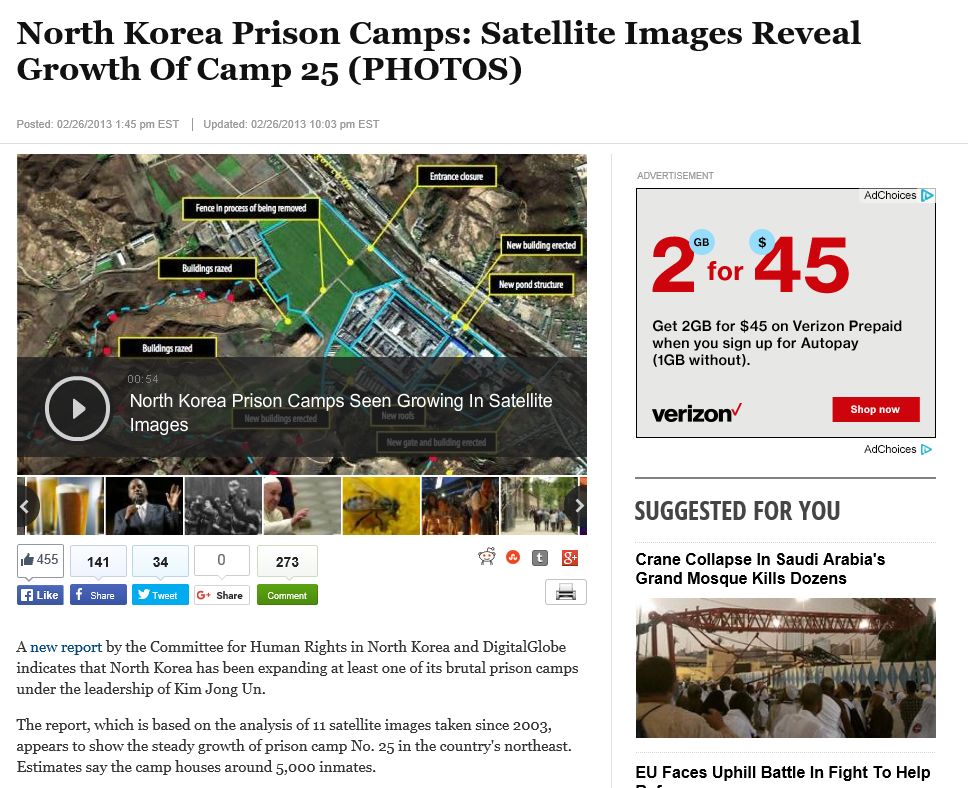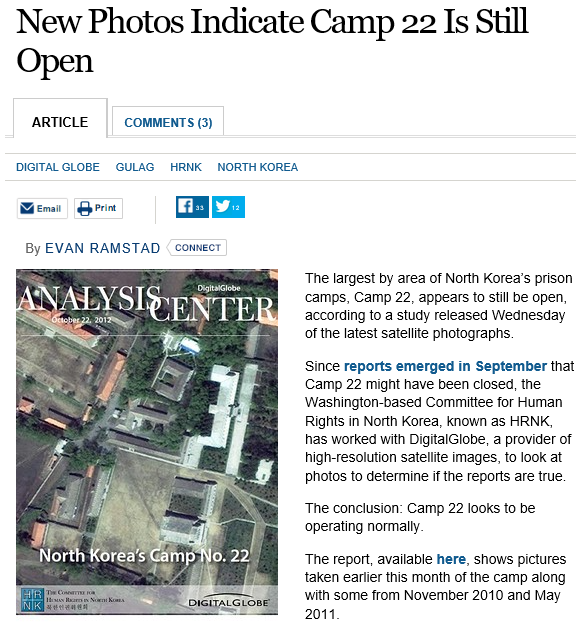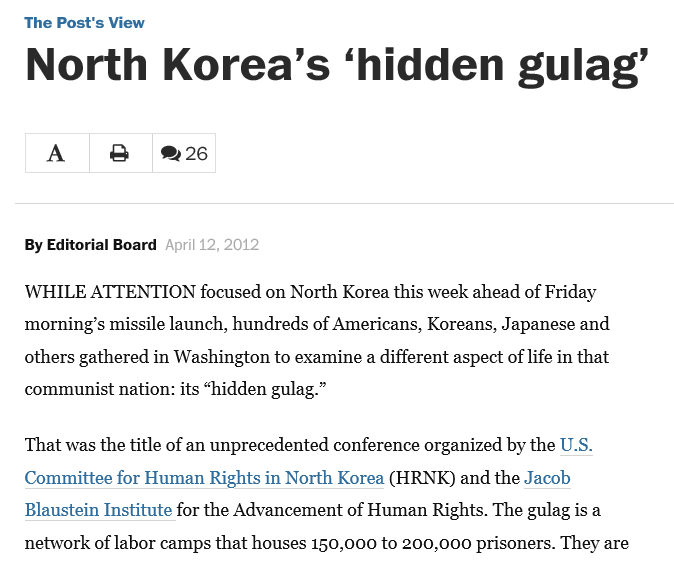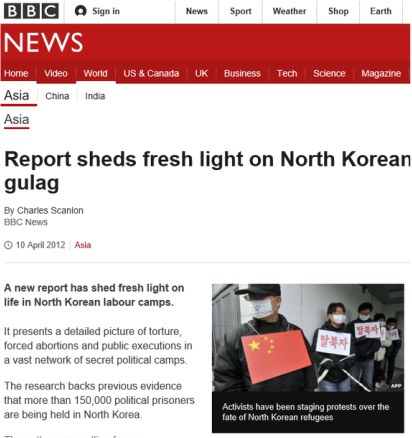The Committee for Human Rights in North Korea has been featured in hundreds of articles, documentaries, and interviews. Below you will find a comprehensive archive of all HRNK news media. Sort alphabetically, by date, or news source, and click to view the media.
Video
North Korean Human Rights: Two Years beyond the COI ReportThe Korea Society marks two years since the release of the United Nations Commission of Inquiry Report (COI) with a message from South Korea's Ambassador on Human Rights Lee Jung-hoon and in-studio discussion with Greg Scarlatoiu.
|
2016 North Korea DocumentaryFeaturing an interview with HRNK board member David Maxwell
|
Expert′s view: HRNK Executive Director Greg Scarlatoiu
Pyongyang′s public executions
그렉 스칼라튜 북한인권위원 |
U.S. pressures North Korea over nukes, human rightsExecutive Director Greg Scarlatoiu on North Korea's human rights
|
Radio
War over the Scarborough Shoals? Famine from UN Sanctions in North Korea? Trade War with China? Gordon Chang, Daily Beast. Greg Scarlatiou, Committee for Human Rights in North Korea. Richard Katz, Oriental Economist Report. Desmond Lachman, AEI._ |
Print and Online News
|
Your browser does not support viewing this document. Click here to download the document.
|
In another case, the Committee for Human Rights in North Korea used satellite imagery to expose the huge prison camps in the country that the government denied existed. Human rights organisations have since monitored the scale and growth of these prisons using satellites, which made international news. |
|
Your browser does not support viewing this document. Click here to download the document.
|
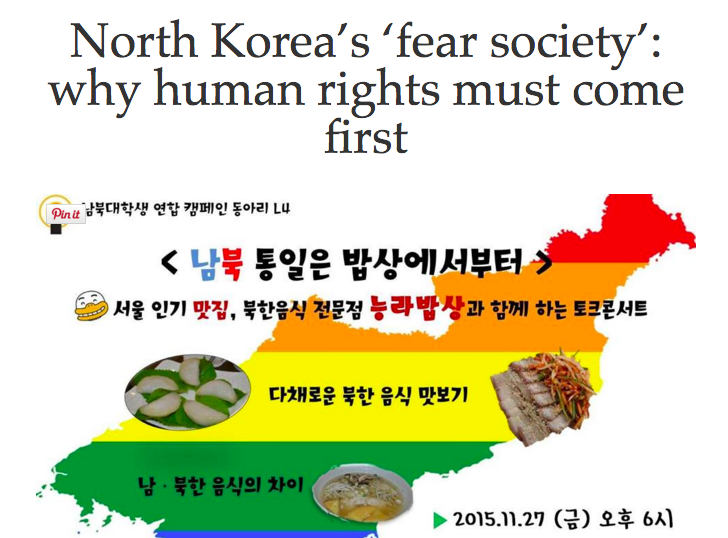
|
Until now, policy discussions on North Korea have generally separated security issues from human rights concerns. Raising human rights problems in North Korea has been seen as a sure way to scuttle efforts to resolve the North Korean nuclear problem through negotiations. But we meet at a time when there is growing skepticism about the possibility that such efforts will produce meaningful results. |
The Committee for Human Rights in North Korea (HRNK), a non-governmental organization based in Washington, D.C. and AllSource Analysis (AllSource), a leading global provider of high-resolution earth imagery solutions, have launched a report entitled North Korea: Ch’oma-bong Restricted Area… For this report, AllSource used pan-sharpened multispectral satellite imagery collected by DigitalGlobe, Airbus Defense and Space, NASA’s EO-1, and Landsat from December 18, 2006 through May 24, 2015. Imagery analysis leads to the determination that the area is a kwan-li-so (political prison camp). |
_What Kim Jong-un does not possess is the unquestioned, absolute and enduring loyalty of the leadership and the population. Although political culture may guide the succession, the new leader’s ability to deliver on his policy agenda affects his ability to consolidate his power. Kim Jong-unis two hereditary transitions away from Kim Il-sung’s revolutionary credentials. His claim to legitimacy is thus weaker, and his policy decisions will play a greater role in maintaining legitimacy in the eyes of the country’s elite. |
_Often referred to as the Pyongyang Republic, North Korea’s capital encompasses the nexus of ideology, centralization of power, resource prioritization and politically oriented privilege that enables the Pyongyang Republic to deny every North Korean every conceivable human right. |
The tricky business of securing international peace requires cool heads and quiet diplomacy. Human rights demand redress for wrongs that cannot be easily compromised. Peace and security necessitate delicate footwork to preserve safety and prevent conflict. Compromise and accommodation are usually the name of that game. |
Stories can show how the Korean People’s Army would be integrated — if it maintains the chain of command and does not attack the South. They can show what happens to scientists who cooperate to dismantle the nuclear program. The Korean people can learn about landownership, the democratic political process and, most important, freedom. Serial dramas can educate people through the entertainment they crave. |
The workers abroad do not have any freedom of association or collective bargaining. Suspected dissent results in swift repatriation and harsh punishment. According to one of the former workers: “They put plaster casts on both of the worker’s legs and send him back. The casts are taken off after they cross the border. They let the workers go home if it’s a minor problem, but for bigger issues they are sent to a kwan-li-so (political prison camp).” |
The Committee for Human Rights in North Korea (HRNK) warmly welcomes Republic of Korea President Park Geun-hye to Washington, D.C., and commends Her Excellency’s vision and efforts toward a peaceful, prosperous, democratic and unified Korean Peninsula. The only U.S.-based bipartisan independent NGO tasked to investigate and report on North Korea’s human rights situation, our committee looks forward to President Park’s continued involvement in bringing freedom, justice and economic development to the people of North Korea. |
While many are aware that North Korea is one of the worst violators of human rights in the world today, less known is North Korea’s practice of sending its citizens abroad to work and earn hard currency for a government under heavy economic sanctions. These ‘slave laborers’ can be found at workplaces from construction sites in the Middle East to logging camps in Russia and restaurants in China. |
Details of the grim conditions have been revealed in a new report by the Committee for Human Rights in North Korea, a Washington-based non-profit group. |
Held at the Newseum in Washington, D.C., presenter David Hawk and author of Hidden Gulag IV: Gender Repression and Prisoner Disappearances, told reporters that women escaping North Korea for China in search of greater opportunity are detained by Chinese authorities and sent back to North Korea, where they are sent to prisons, and some political prison camps. This, he says, denies their ability to seek asylum as refugees elsewhere, as protected under international law. |
“Women in particular are fleeing North Korea in even greater numbers,” said Roberta Cohen, co-chairperson of the Washington-based HRNK, in a printed statement. “When they are apprehended, they are subjected to deliberate starvation, persecution and punishment.” |
This report found that an additional women’s section of a kyo-hwa-so prison was added after 2008 with room for more than 1,000 prisoners. One former North Korean prisoner suggested that the new kyo-hwa-so No. 12 in Jongo-ri, North Hamgyong Province near the Chinese border was constructed to facilitate the imprisonment of detained North Koreans who had fled across the border and then been captured. That there are a disproportionate amount of women refugees is well documented in the literature. The report also documents the demolition of Sorimchon/Kumchon-ri, a “revolutionizing processing zone” section of Camp 15, the best documented kwan-li-so camp. |
For years, The Committee for Human Rights in North Korea (HRNK), has sought to change this. They have published a number of reports on the North Korean gulag, among other topics. Now, HNRK has launched a new website, NKHiddenGulag.org, which aims to teach about perhaps the most sustained and egregious human rights tragedy since the Holocaust. |
The most recent changes in North Korea’s remote and extensive secret prison network is documented in The Hidden Gulag IV, an update of the Committee’s decade-long examination of the North Korean system, published on Friday. The report is buttressed by a separate analysis of satellite photographs and based on interviews with inmates who endured stays in the horrific system and subsequently escaped to South Korea after their release. |
“Up to 120,000 citizens are being held without due process in horrific, inhumane conditions for political reasons, and an estimated half-million people have died in these camps,” said Executive Director Greg Scarlatoiu from HRNK’s Washington, D.C., headquarters. |
A human rights think tank said in an August report that tens of thousands of North Korean prisoners "disappeared" from an enormous gulag where food shortages are common, eliciting fear that they may have starved to death, NBC News reported. Washington, D.C.-based Committee for Human Rights in North Korea (HRNK) said in an August report entitled, "North Korea's Hidden Gulag: Interpreting Reports of Changes in the Prison Camps" that Camp 22, a labor camp larger than Los Angeles, used to hold around 30,000 prisoners, but dwindled to 3,000 before it was closed late last year. HRNK said 8,000 prisoners could have been transferred to other camps, but there were no signs that any inmates were released. |
A new report by the Committee for Human Rights in North Korea and DigitalGlobe indicates that North Korea has been expanding at least one of its brutal prison camps under the leadership of Kim Jong Un. |
The largest by area of North Korea’s prison camps, Camp 22, appears to still be open, according to a study released Wednesday of the latest satellite photographs. |
The report - by the Washington-based Committee for Human Rights in North Korea - uses detailed satellite photographs to identify barracks, work sites and execution grounds in forced labour camps hidden in remote mountain areas. |
